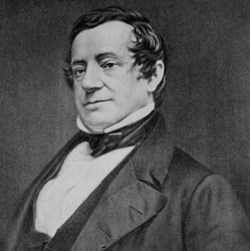L’articolo è stato aggiunto alla lista dei desideri
Washington Irving - A Short Story Collection
Cliccando su “Conferma” dichiari che il contenuto da te inserito è conforme alle Condizioni Generali d’Uso del Sito ed alle Linee Guida sui Contenuti Vietati. Puoi rileggere e modificare e successivamente confermare il tuo contenuto. Tra poche ore lo troverai online (in caso contrario verifica la conformità del contenuto alle policy del Sito).
Grazie per la tua recensione!
Tra poche ore la vedrai online (in caso contrario verifica la conformità del testo alle nostre linee guida). Dopo la pubblicazione per te +4 punti
Altre offerte vendute e spedite dai nostri venditori



Tutti i formati ed edizioni
Promo attive (0)
Washington Irving was born on 3rd April, 1783, the youngest of 11, in New York. Irving found his real interests away from school in literature and the theatre. An outbreak of yellow fever at 15 moved him away from Manhattan and into the surrounding countryside providing valuable settings for later works such as ‘The Legend of Sleepy Hollow’. By 19 Irving was writing regularly to the New York Morning Chronicle, commenting on the theatrical and social scenes. When his health began to fail, he was sent on the Grand Tour of Europe. Bizarrely he ignored most of the great sights on offer to concentrate on developing his social and conversational powers. His health, though, did improve. In 1806, back in New York to study law, he scraped a pass at the bar and then founded with several others the literary magazine Salmagundi. Irving nicknamed the city ‘Gotham City’, a name still in use today. Moderately successful, the magazine spread Irving’s reputation beyond New York. In 1809 while mourning the death of his teenage fiancée Irving finished his first significant book, ‘A History of New-York from the Beginning of the World to the End of the Dutch Dynsasty, by Diedrich Knickerbocker’. It satirised local history, local historians and politics. It received great critical acclaim. Unfortunately his family’s established trading company was now facing great upheavals and Irving was dispatched to England to try to sort it out. After two years he could see no way out but bankruptcy. This left him in England with no real employment prospects, and so he returned to writing. He sent some short stories back to New York to be published as ‘The Sketch Book of Geoffrey Crayon, Gent’. The first part included ‘Rip Van Winkle’ and was extremely successful. The sixth part contained ‘The Legend of Sleepy Hollow’. Beset by literary piracy, with no copyright law at the time, he set about publishing legitimate copies in England to outwit the bootleggers. From now on Irving published concurrently in America and England in order to render piracy obsolete. In August 1824, he published ‘Tales of a Traveller’, which included the famed ‘The Devil and Tom Walker’. In 1826, the American Minister to Spain, invited him to Madrid where he could examine the many historical documents that he had access to. Irving reveled in both the size of the libraries he was granted access to and their rich quality. Historical works flowed from his pen further enhancing his reputation and fortune. Following the completion of ‘Tales of the Alhambra’ in 1832, Irving returned to America after 17 years abroad. He was now a figurehead of American literature and dispensed advice to Edgar Allan Poe amongst others. Irving also became an advocate for American copyright legislation. A later appointment as Minister to Spain in 1842 left him disheartened at the antics of the various political factions he encountered. It also afforded him no time to write as he had hoped. On his return home he began an ‘Author’s Revised Edition’ of his works agreeing an unprecedented deal for 12 per cent of the retail profits. Washington Irving died of a heart attack at his ‘Sunnyside’ home on the 28th November 1859 at the age of 76, a few months after completing his five volume George Washington biography, in whose honour he had been named. 01 - Washington Irving - A Short Story Collection - An Introduction 02 - The Legend of Sleepy Hollow by Washington Irving 03 - The Devil and Tom Walker by Washington Irving 04 - The Art of Book-Making by Washington Irving 05 - The Conquest of the Earth by the Moon by Washington Irving 06 - John Bull by Washington Irving
L'articolo è stato aggiunto al carrello
Formato:
Gli Audiolibri venduti dal nostro sito sono in formato MP3 e protetti da un DRM proprietario Kobo.
Compatibilità:
Gli Audiolibri venduti dal nostro sito possono essere ascoltati sul tuo smartphone o tablet tramite la APP gratuita Kobo Books scaricabile da iOS o Android. Gli Audiolibri non possono essere scaricati in locale o trasferiti su un client di ascolto diverso da quello fornito tramite Kobo. Non è possibile ascoltare gli audiolibri con la Kobo APP Desktop. Puoi ascoltare gli Audiolibri tramite determinati eReader Kobo, utilizzando cuffie o casse con Bluetooth. Visita la pagina degli eReader per avere maggiori dettagli.
Cloud:
Gli Audiolibri venduti singolarmente dal nostro sito sono immediatamente sincronizzati sul tuo account personale in automatico. Successivamente all'acquisto, sono subito disponibili all'ascolto tramite i client di lettura Kobo compatibili.
Clicca qui servissero ulteriori informazioni
L’articolo è stato aggiunto alla lista dei desideri



